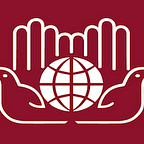Integrating Refugees and their Hosts Through Architecture
During the inaugural Design for Humanity Summit on June 22, 2018, a Q&A was held between Angela Wells and Eliza Montgomery, Associate Architect at ENNEAD Lab.
Below is the Q&A, more content from the summit can be found in the newly released Design for Humanity Summit Yearbook available for download here.
AW: How does Ennead Lab use architecture to improve refugee settings with humanitarian actors?
EM: Four or five years ago we began working with UNHCR to look at different ways to collect data about places where refugees were moving and use those statistics to help show hosts that incoming populations can actually benefit their cities and populations.
From a spatial perspective ,I think designers can have a lot of impact because if they can visualize how refugees can be a benefit, and not a burden, from the beginning, then host communities and governments will be much more likely to accept migrant populations.
AW: What are some examples of how space or architecture can flip that paradigm?
EM: I think by focusing on the places in the center of an existing host community or host city, an area of economic exchange is a good place to start. In a lot of major cities, the infrastructure for those day to day activities is not robust enough to really support more people coming in, but refugee populations bring more the just people, they bring economic interaction and new markets too.
This also requires the humanitarian sector to support and improve those areas. There could be a new market area with better infrastructure to support it, or there could be a new educational center that can serve both the refugee population and the local population, if that is something the local population is lacking.
AW: What is the biggest challenge to implementing this type of infrastructure?
EM: Architecture is buildings, its material things, its concrete and wood and materials; a lot of people when they hear those words they immediately think ‘these areas hosting refugees will be permanent and last forever’. For host governments, this is a problem because they don’t want to admit or accept from the get go that refugees will be there permanently.
AW: So, this is a way to help governments transition their response from a camps to cities approach?
EM: The main transition UNHCR and other humanitarian agencies are making is going from camps to cities, or in every case possible, finding an alternative to a camp situation.
We couldn’t be more supportive of that and think that for long term successful situations, it’s definitely better if the emergency phase is focused more on integration with an existing community. We are trying to contribute more tools and planning ideas for how to integrate with existing communities.
AW: How can architecture and design be better integrated in humanitarian interventions?
EM: To make a real impact and design spaces that a lot of different people can use, the real work is figuring out people’s interactions and how we can create more spaces for the good kinds of interactions. Over the last five years we have working on spatial guidelines that UNHCR can teach to younger site planners working on these that they can really think more dynamically about the actual space of social interaction.
AW: Do you think there’s also a role for beauty and aesthetics, even in a tragic situation?
EM: In refugee scenarios, that’s one key place where, if refugees can have more agency in the design process, then they can be ones to define what beauty means to them in their new environment. This gives us higher potential that we can design a better space, one that feels like home, like their space which creates a lot more opportunities for them to start new lives.
It’s crucial that refugees are involved in the design rather than leaving it up to a random outside architect is going to decide what’s beautiful and what will make that space feel like home.
Learn more about the Design for Humanity Summit II, taking place June 21, 2019 at Fordham University’s McNally Amphitheatre here.
About the IOM — UN Migration
Established in 1951, IOM is the leading inter-governmental organization in the fi eld of migration and works closely with governmental, intergovernmental and non-governmental partners. With 173 member states, a further 8 states holding observer status and offices in over 100 countries, IOM is dedicated to promoting humane and orderly migration for the benefit of all. It does so by providing services and advice to governments and migrants. IOM works to help ensure the orderly and humane management of migration, to promote international cooperation on migration issues, to assist in the search for practical solutions to migration problems and to provide humanitarian assistance to migrants in need, including refugees and internally displaced people
About the IIHA
The Institute of International Humanitarian Affairs (IIHA) prepares current and future aid workers with the knowledge and skills needed to respond effectively in times of humanitarian crisis and disaster. Our courses are borne of an interdisciplinary curriculum that combines academic theory with the practical experience of seasoned humanitarian professionals. The IIHA also publishes on a wide range of humanitarian topics and regularly hosts a number of events in the New York area, including the annual Humanitarian Blockchain Summit and Design for Humanity Summit.
For media inquiries please contact:
Camille Giacovas
Communications & Research Officer, IIHA
cgiacovas@fordham.edu
Angela Wells
Public Information Officer for the International Organization for Migration’s Department of Operations and Emergencies
awells@iom.int
